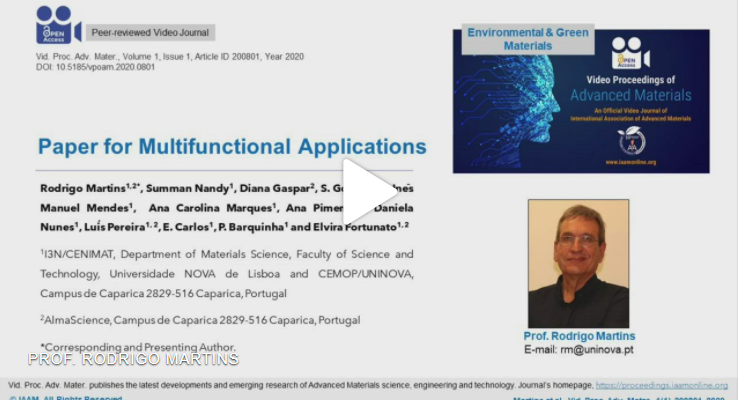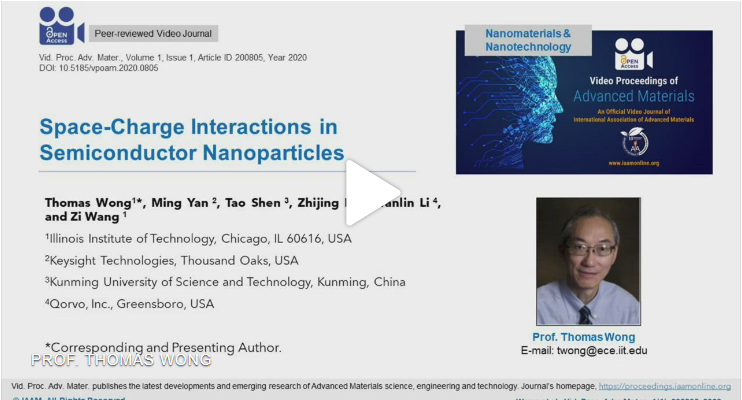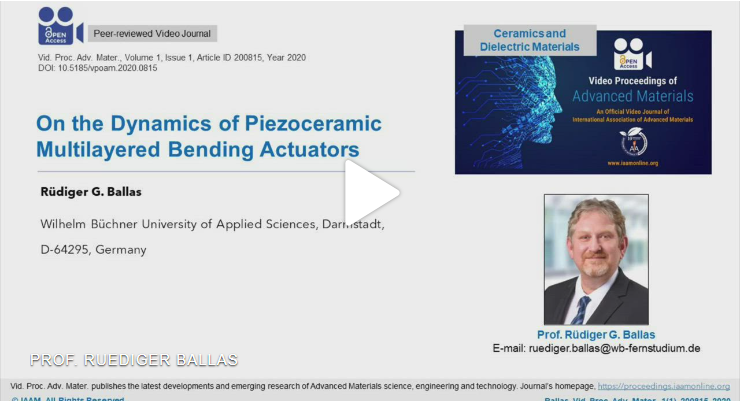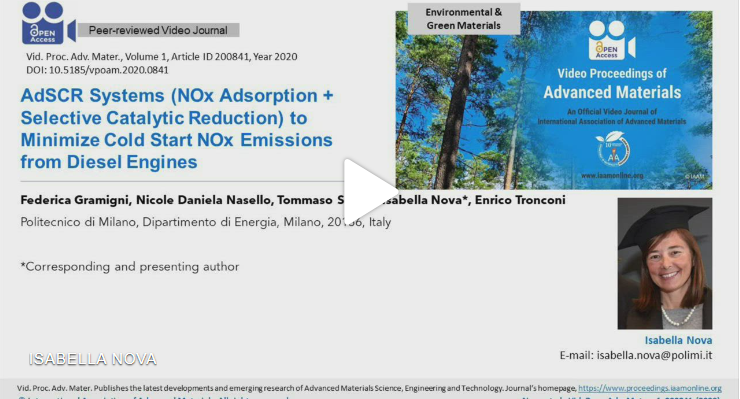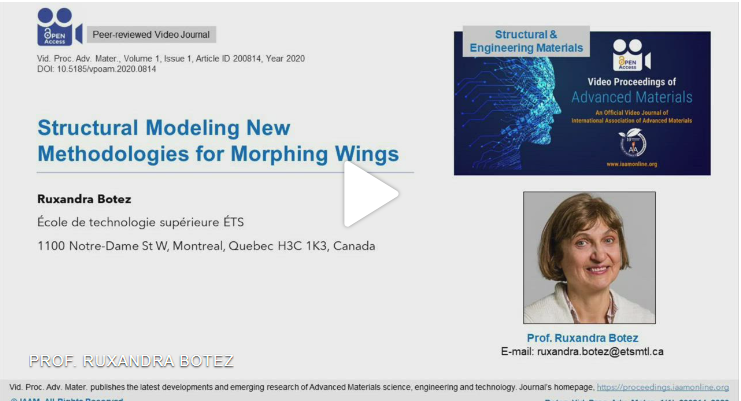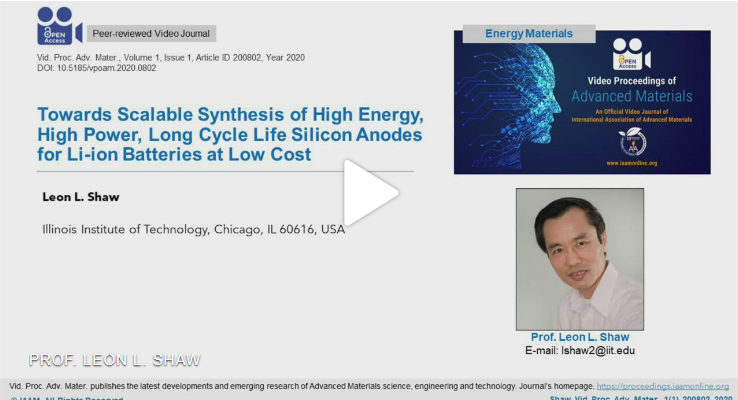.jpg)
Advancement of Materials to Sustainable and Green World
International Association of Advanced Materials has committed to work in line with the United Nations’ Sustainable Development Goals (SDGs) for the new decade. The association has stepped into the next decade by declaring its slogan ‘Advancement of Materials to Sustainable and Green World’. We understand that having a sustainable future should be the most important aim of humankind right now. In line with its accumulative sustainable development agenda, the association puts world-wide efforts with Materials Science, Engineering, and Technology across spheres of academia and industry towards potentially addressing the challenges of sustainability of materials for a green world.
Advanced Materials’ Support to SDGs
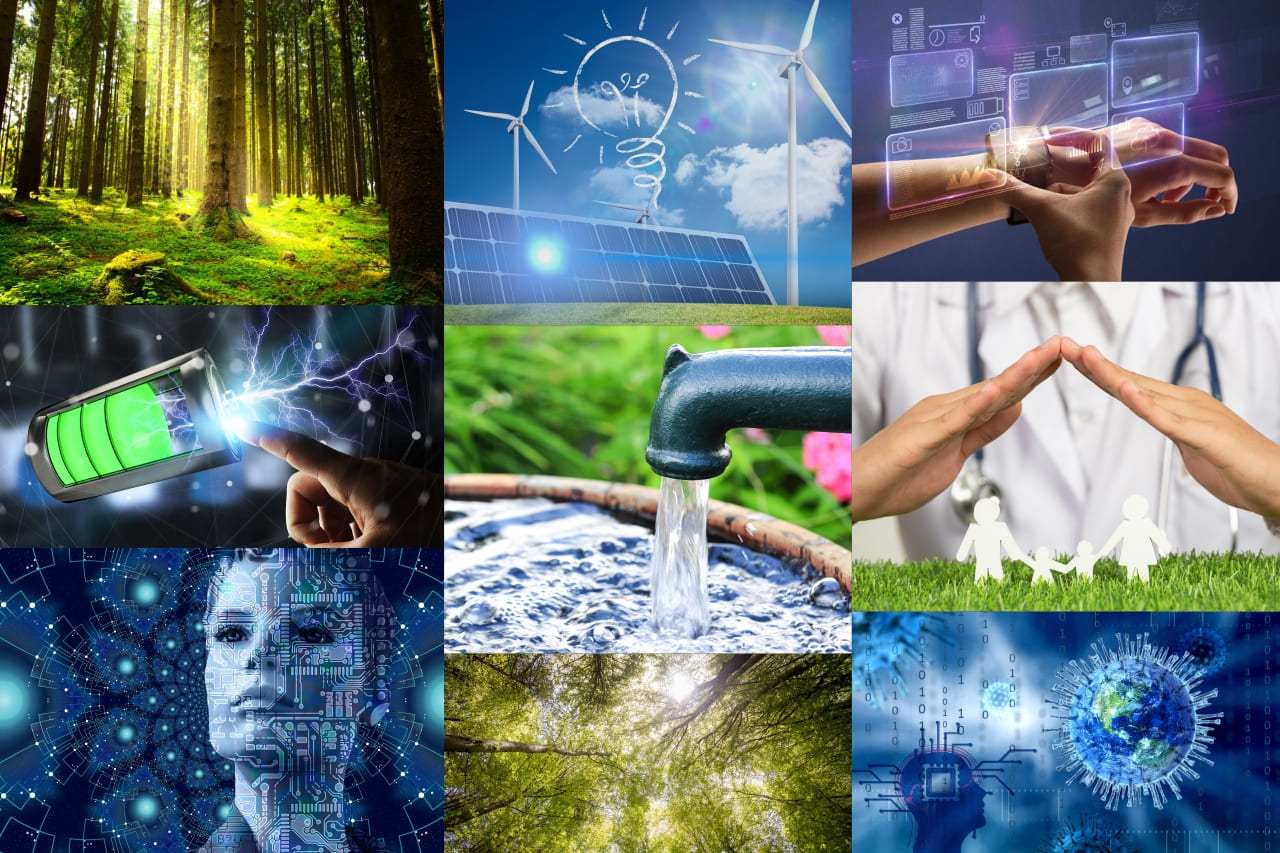
Although the Sustainable Development Goals do not outline a specific role for Advanced Materials, these resources are particularly important for the proper and effective implementation of the SDGs. In the modern world, Advanced Materials have already started becoming an indispensable part across industries and all sectors of the economy. With the use of newly developed advanced materials that are highly functional, effective businesses across industries have begun improving their processes and manufacturing methods. This rising implementation of advanced materials in areas like manufacturing processes across healthcare, energy, environment, and many more has led them to be incredibly useful and essential for achieving the Sustainable Development Goals laid down by the United Nations.
International Association of Advanced Materials (IAAM) has effectively taken several initiatives in this direction and hopes to contribute towards the accomplishment of these goals. IAAM is dedicated to accelerating Materials Research and Innovations to facilitate resources and technology-gathering to address sustainable developmental needs.

Eliminate Poverty
The fields of Materials Science, Engineering, and Technology are responsible for a fourth industrial revolution in which the world is witnessing how technology is merging digital, biological, chemical, and physical spheres of global human activities. With this new industrial revolution, Advanced Materials are finding new and diverse range of applications across industries. Moreover, the enhancement that nanotechnology and materials research have made possible in Mining and Materials Extraction is widely known. As a result, it plays a vital role in creating wealth and prosperity globally and eliminating poverty, especially in the developing countries. IAAM plays its part to achieve this goal by creating a widespread awareness of Materials right at the grassroot levels and creating opportunities.
Zero Hunger
There are many ways in which Advanced Materials will help eliminate hunger. Materials Research leads to the formation of new materials which are at the core of development of new technology. As a result, advances in Materials will lead to better protection for plants from infestations. It’ll lead to improvement in equipment involved in the agriculture sector. The production of crops and the food distribution channels will see drastic enhancement. Moreover, nanotechnology can lead to better packaging of food and result in improving the shelf life of food products. An extended shelf life of food products will see the fortification of food and prove to be helpful in resource-deficient areas of the world. Overall, the nanotechnology applications on novel and advanced materials hold serious potential to facilitate technological advances that can help improve food security, supply, and production. IAAM’s research and activities are focused on developing novel materials that can contribute in this direction.


Ensuring Healthy Lives
Advanced Materials have abundant applications in the Healthcare sector and can help enormously in ensuring healthy lives for people around the world. The advances in materials are facilitating progress for medical devices. With the help of new materials that have improved properties, the medical equipment and devices are functioning better and providing functionality that was believed to be impossible until very recently. It is the need of medicine industry that is driving the experts to engineer and create new materials. These new materials have better and enhanced physical, electrical, and chemical properties and stimulate innovation. Ceramics, Biomaterials, Composites, and Polymers are some of the many kind of advanced materials being used for the enhancement of medical therapy, equipment, and devices. They have already resulted in innovations like implantable medical devices, forming new tissue parts, injectable gels, and many more. As a result, Advanced Materials will prove to be a key player in ensuring healthy human life globally.
Quality Education
Advanced Materials is a relatively new and constantly expanding line of scientific enquiry. With the materials finding a wide range of applications in multiple industries and business spheres, there is a growing focus on Materials Research and Nanotechnology. As a result, there is a critical need to promote quality scientific education and train the next generation of materials scientists and professionals. IAAM runs several publication initiatives and international open access journals, Advanced Materials Letters and Advanced Materials Proceedings with an aim to make quality scientific education accessible. These initiatives work on the model of Diamond Open Access and allow people to access scientific literature for free. By doing so, IAAM ensures inclusive and equitable quality education for all.


Gender Equality
In today’s age, Advanced Materials has become a critical field for the development of national economies. Yet, there is an imbalance when it comes to gender equality in this important industry. Only less than 30% of the global R&D workforce is represented by women. Over the years, IAAM has constituted one of the largest networks of Materials’ researchers, scientists, and professionals. The association works forward with without any discrimination and promotes gender equality in the Global Materials community.
Clean Water and Sanitation
Many recent developments in Advanced Materials have presented new approaches to deal with the challenges of water contamination and disinfection. The field has shown great potential to help mankind satisfy the global demand of clean water. Nanofibrous membranes offer promising and improved efficiency in terms of purifying water. IAAM focuses on developing membrane materials and advancing technologies for water purification. In addition, IAAM congresses and events witness regular symposia on Clean Water Technologies. IAAM publications have also released full issues dedicated to use of advanced materials in water decontamination.


Affordable and Clean Energy
Advanced Materials are indispensable to fulfill the demand for clean energy and make possible a sustainable world. Materials Science is facilitating the development of Photovoltaic materials and Thin Films to increase solar energy production and its efficiency. The turbines used in wind energy are also being made of polymer matrix composite materials. In the sphere of Geothermal Power, new materials technologies have become crucial for the success of Enhanced Geothermal Systems. With structural materials, advanced ceramics, and coatings for fuels, Advanced Materials can transform the Nuclear Energy sector as well and reduce the fuel consumption and greenhouse gas emissions in Fossil Energy. In addition, corrosion resistant coatings, Carbon Fiber Composites, Phase Change materials, and Optical Metamaterials are bound to play an important role in efficient energy transportation, storage, and buildings. IAAM works on the translation of new materials and collaborate with businesses and experts from the energy sector to make possible a sustainable future with clean energy.
Decent Work and Economic Growth
Materials Research and Development is a wide set of science & engineering disciplines that engages and employs researchers and professionals across industry, academia, and government labs. Advanced materials and materials research are hugely responsible for technological advances that we need for energy, defense, IT, national security, consumer products, telecommunications, healthcare, and many more. The advances in the manufacturing techniques for these products give the global economy the required boost. Advanced Materials is at the heart of commercial products today. From computer circuits to military planes, they are everywhere and thus support economic growth of countries. IAAM takes cognizance of this and utilizes its research to advance the field of materials science and support economic growth.


Industry, Innovation, and Infrastructure
Materials are responsible for innumerable valuable innovations around us. The advanced materials are used in everything from automobiles to the lasers used by Physicists. Moreover, these resources have become significantly relied upon and used in industries like automotive, aerospace, electronics, metals, energy, healthcare, telecommunications, chemical, and many more. With applications in so many industries, Materials Science and Engineering are making contributions to the economy and nations’ infrastructure. IAAM organizes consortium and symposia dedicated to bringing stakeholders from business and academia together. This leads to collaborations and improved business innovation.
Reduce Inequalities
Advanced Materials have led to innovations across industries and is facilitating the enhancement of economies and creation of jobs. Thus, the field of materials science and engineering is leading to reduced inequalities among people. International Association of Advanced Materials works with the same vision and utilizes science, engineering, and technology to reduce inequalities. With the aim to make knowledge accessible to all, IAAM runs Open Access journals that allow people to access important scientific literature and knowledge free of cost. We have also taken our flagship international networking event, the Advanced Materials Congress to multiple continents, including Europe, Asia, Australia, and America with an aim to reduce inequalities in terms of scientific knowledge, exchanges, and opportunities.


Sustainable Cities and Communities
With sub areas like structural materials, construction materials, lightweight cementious composites, and many more, Materials Science holds huge potential to help mankind realize the dream of sustainable buildings, and eventually cities. Shape memory alloys, piezoelectric and magnetostrictive smart materials are extremely important for developing smart cities. In addition to this, materials science has enabled efficient use of energy-intensive materials, retention of materials that are indispensable for modern technology. Moreover, by making possible the mitigation of corrosion and enhancing the processes of the Energy sector, advanced materials have made sustainability an achievable reality. IAAM has focused its research networks and consortiums on formulating recycle-friendly materials and green materials to contribute to building sustainable cities and communities.
Responsible Consumption and Production
Efficiency of processes is directly related to the consumption of resources. Advanced Materials have resulted in significant enhancement in the efficiency of energy production from fossil fuels. Coal Power plants have reported improvement in efficiency by up to 42% with the use of new power plants. Development of advanced coatings has also led to reduced fuel consumptions. In other areas as well, advanced materials are responsible for the efficient consumption of resources. With the advent of advanced rubber composites, the life of tires has increased and tremendous advancements have been made in energy efficiency as a result of low emissivity windows and green insulation materials. IAAM’s work on the development of green materials, structural materials and collaborations with Energy experts is dedicated to reducing the consumption of natural resources. Our open access publication initiatives are also dedicated to spreading awareness among people regarding their responsibility towards sustainability.


Climate Action
Climate change is perhaps the biggest problem that mankind faces in the 21st century. Advanced Materials and Nanotechnology are powerful tools that can help us tackle this impending global disaster. Light-weight nanocomposite materials can reduce the weight of commercial vehicles which can result in a reduced fuel consumption. The nano-coatings have proven to be the best tool to reduce emissions and increase clean energy production. Moreover, nano-structured materials, like aerogels, can lead to reduction in heat transfer through building elements and also significantly reduce loads on heating systems. IAAM has taken cognizance of the role that nanotechnology can play to mitigate climate change and dedicates its research activities to the same.
Life below water
Aquatic and Marine pollution is another huge problem that the world faces as the seas are home to innumerable organisms and source of protein for 3 billion people. The advanced materials have made possible technological progresses to mitigate marine pollution as well. With green submarine cables possible now, the ocean floor can be monitored like never before. Also, designing and synthesis of carbon materials can lead to detection and removal of dyes, pharmaceuticals, and heavy metals from the ocean water. IAAM is focused with its international research networks and consortiums on the need to conserve different spheres of the environment, including the aquatic life. The association works with Materials research towards the same.


Life on Land
Materials Science & Engineering has effectively enhanced the efficiency of processes in various industries including Energy and Environment. Since these two industries are directly linked to the utilization of natural resources, Materials Engineering plays a significant role in the sustainable use of terrestrial ecosystems. By reducing the use of fossil fuels, advanced materials are contributing heavily to environment conservation. IAAM’s work with Materials Science, Engineering, and Technology spans across the industries of Energy and Environment. Our research is dedicated to developing and synthesizing green materials and recyclable materials as well.
Peace, Justice, and Strong Institutions
Materials science, and by extension the whole scientific sector, is a major part of national economies. Thus, it highly impacts the level of prosperity in society. Materials science and its advancements are leading to new and innovative technological advents, which eventually boost the economy and make for a prosperous society. A prosperous society is where peace prevails and strong institutions can be established. International Association of Advanced Materials works forward with the aim to advance materials science and engineering and contribute to a society where everyone gets justice.


Partnerships for the Goals
There is a need for partnerships and collaborations to effectively achieve the dream of global sustainability. Materials Science has been a field that has enabled partnerships across business sectors, academia, and industries. Advanced Materials has effectively led to the amalgamation of technology experts with researchers. IAAM organizes consortiums and conferences that are aimed at creating an environment of high-end collaborations between the global leaders from academia and industry. The association has facilitated the IAAM Fellow Summit which will be an exclusive forum for the most accomplished global researchers, scientists, policy makers, and representatives from government authorities. This prestigious international forum will allow for discussions among the best minds of the world as to how the field of Advanced Materials can be utilized to achieve the goal of UN’ Sustainable Development Global Agenda for 2030.
International Association of Advanced Materials’ Sustainable Development Agenda for 2030
R & D World Links
International Association of Advanced Materials makes efforts to create an international network on ‘Sustainable Materials Research and Innovations’ and offers a wide range of cooperation like High-end- expert consortiums, Research & Development, Industrial Training, Technology Transfer, Innovations, and events to exchange sustainable processes at the global arena. The Translational and Materials innovation is focused on enhancing new methods and technologies in materials sustainability for health, energy, and environment. For making changes that matter to sustainable research, researchers may join the activities of International Association of Advanced Materials. Our efforts include:
- Constituting consortia and projects for academic disciplines and business areas that hold the potential to transform the future markets, https://www.iaam.se/projects-consortiums
- Creating decentralized multidisciplinary research projects through the engagement of world-wide joint/network labs and experts.
- Finding solutions to problems, , by providing the right network and strategies to ensure that we create the optimum financial value out of your technology and research, https://www.iaam.se/commercializing-technology
- Coordinating projects and prototype products to to translational from the research stage to TRL 6 and above in the sectors of energy, environment, health, and many more, https://www.iaam.se/area-focus
- Providing innovative solutions and analytical strategies to ensure your compliance with internationally accepted United Nation Agenda of green practices through eco-friendly innovation, https://www.iaam.se/how-we-work
- Forming partnerships and collaborations for actively working in Translational Research Activity, Joint Research Program, Educational Activity and Joint Supervision of PhD and Master Students, etc.
In this new decade, IAAM has included Global sustainability as one of the primary agendas and topics of discussion in all its cooperation initiatives. The initiatives are focused on bringing to focus specific areas like Sustainable Materials, Green Innovations, Translational Research, and many more. They bring together policymakers, global scientific leaders, and researchers to map out the path for global sustainable development. The association is also making efforts to propagate the idea of ownership of the waste lying with the creator of the product in order to minimize waste production.
.jpg)
Materials’ Flagship
IAAM utilizes its international researchers’ networks to create interdisciplinary worldwide consortiums and experts’ group on specific kinds of Materials Research and Technology that are focused on taking forward the agenda of sustainability. These topical consortiums create opportunities for researchers, engineers, students, and professionals to discuss the formulation of novel kinds of workable advances to create new technologies and support the UN Sustainable Development Goals.
The IAAM’ consortiums are extremely specific to themes that are indispensable to Global Sustainability. From reducing carbon emissions to improving the functioning of the Energy sector to enhancing the quality of healthcare, Advanced Materials and Nanotechnology have applications in a wide range of important areas. The IAAM topical consortiums explore all these areas from the lens of Materials Research and generate novel ideas and solutions.
IAAM hosts its leading materials research and innovation hub, the Advanced Materials Congress, in the unprecedented and unique format of ‘Knowledge Experience for social change’. This one-of-a-kind prestigious materials network puts together policymakers, entrepreneurs, researchers, and professionals from academia and industry and leverages their expertise to devise ideas for how advanced materials can be used to contribute to Global Sustainability.
IAAM has also launched the Video Proceedings of Advanced Materials (https://www.proceedings.iaamonline.org/) , which is the first-ever open access video journal that proves to be highly beneficial for exchanging information related to advancements of materials for accomplishing the UN Sustainable Development Goals.
